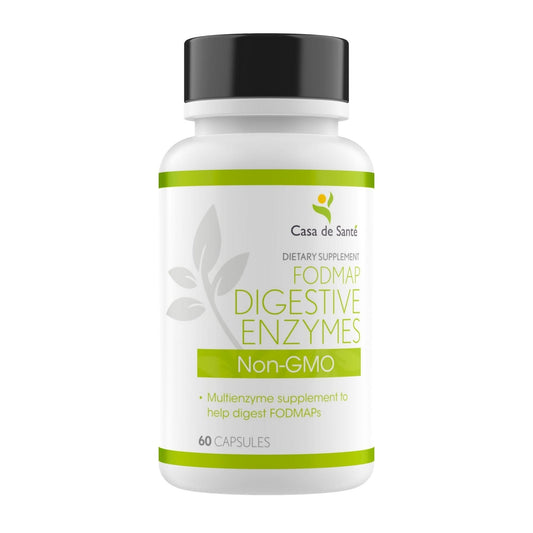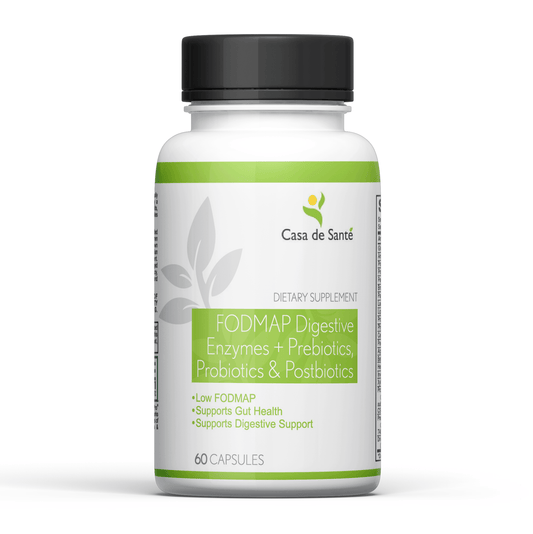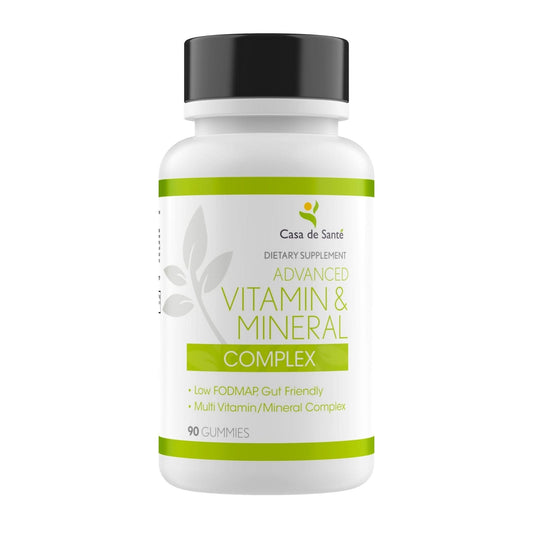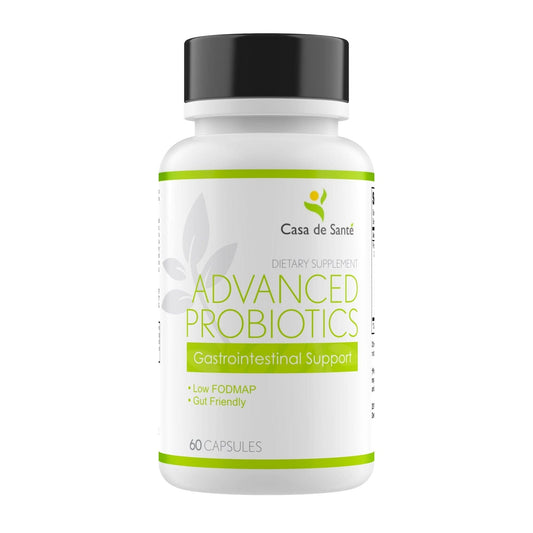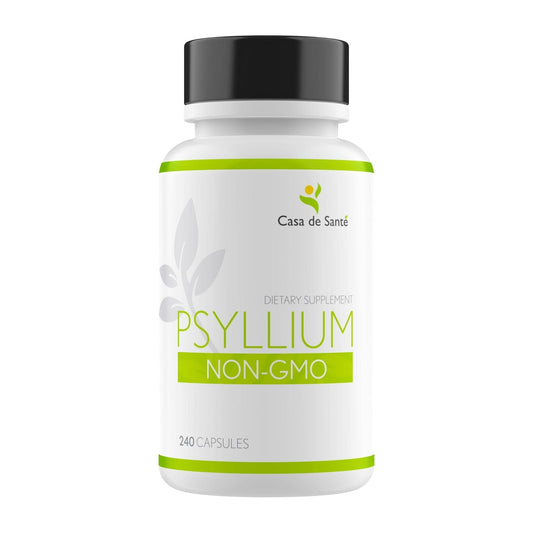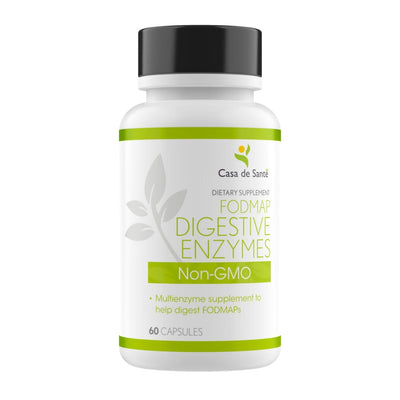Everything You Need to Know About FODMAP Diet for Better Digestive Health
So, you're curious about the FODMAP diet, right? It's one of those things that pops up when you're dealing with gut issues. The FODMAP diet is all about cutting out certain carbs that can mess with your digestion. If you've ever dealt with bloating or IBS, this might be something you've heard of. But there's a lot more to it than just avoiding a few foods. Let's break it down and see what it's all about.
Key Takeaways
- FODMAPs are specific carbs that some people find hard to digest, leading to tummy troubles.
- The diet involves cutting out high-FODMAP foods and slowly reintroducing them to see which ones cause issues.
- Common high-FODMAP foods include certain fruits, vegetables, dairy, and wheat.
- Following a low-FODMAP diet can help manage symptoms of IBS and other digestive problems.
- It's important to work with a healthcare professional to ensure you're getting the right nutrients.
Understanding the Basics of the FODMAP Diet
What Are FODMAPs?
FODMAPs are a group of carbs that include fermentable oligosaccharides, disaccharides, monosaccharides, and polyols. These are basically sugars that many people find tough to digest. Instead of breaking down in the small intestine, they travel to the colon, where they get fermented by bacteria, leading to gas and bloating. So, if your tummy feels off after eating certain foods, FODMAPs might be the culprits.
How FODMAPs Affect Digestion
When FODMAPs make it to the colon without being digested, they become a feast for your gut bacteria. This fermentation process can lead to a lot of gas, which is why you might feel bloated or gassy. For some, it might even cause diarrhea or constipation. People with IBS or other gut issues often find relief by cutting back on high FODMAP foods.
The Science Behind FODMAPs
The science here is pretty interesting. FODMAPs can draw water into the intestine, which can mess with how things move through your gut. This is why some folks get diarrhea. Plus, the fermentation process can cause a lot of discomfort. A nutrition assessment can help identify which FODMAPs are causing trouble, so you can adjust your diet accordingly. It's a bit of trial and error, but the goal is to figure out what works best for your digestive health.
Identifying High and Low FODMAP Foods
Common High FODMAP Foods to Avoid
If you're diving into the FODMAP diet, knowing which foods to dodge is a big deal. High FODMAP foods can mess with your gut, leading to bloating, gas, and other not-so-fun symptoms. Here's a quick list to keep in mind:
- Fruits: Apples, pears, and cherries might be tasty, but they can be tough on your stomach.
- Vegetables: Onions and garlic are flavor powerhouses, but they’re high in FODMAPs.
- Dairy: Milk, soft cheeses, and yogurt can be problematic if you're sensitive to lactose.
- Grains: Wheat-based products like bread and pasta should be on your watch list.
Low FODMAP Foods You Can Enjoy
The good news? There's still plenty you can eat without worrying about your digestive system throwing a tantrum. Here are some friendly options:
- Proteins: Eggs, chicken, and fish are generally safe bets.
- Fruits: Bananas and strawberries are usually well-tolerated.
- Vegetables: Spinach, carrots, and zucchini are low in FODMAPs.
- Grains: Rice and oats are great alternatives to wheat.
Reading Food Labels for FODMAP Content
Understanding food labels is like having a superpower when you're on a FODMAP diet. Here's how to get started:
- Check for High FODMAP Ingredients: Look for common culprits like high fructose corn syrup and certain artificial sweeteners.
- Watch Serving Sizes: Sometimes, a small amount is okay, but larger portions can be problematic.
- Be Cautious with Packaged Foods: These often contain hidden FODMAPs, so it's best to stick to fresh foods when possible.
Taking the time to learn about FODMAPs and how they affect your body can make a huge difference in your digestive health. It's all about finding what works for you and sticking with it.
Steps to Implement the FODMAP Diet
The Elimination Phase Explained
Starting the FODMAP diet means diving into the elimination phase. This is where you cut out all high-FODMAP foods for a short period, typically two to six weeks. It's a bit of a challenge, but the goal is to clear out potential triggers and see if your symptoms improve. To get started, you'll need to prep your kitchen. Clear out those high-FODMAP goodies and stock up on low-FODMAP alternatives. It's like spring cleaning for your pantry, but with a purpose. Keep it simple and plan your meals ahead to avoid any slip-ups.
Reintroducing Foods Safely
Once you've made it through the elimination phase, it's time to reintroduce foods. This is where the detective work begins. Slowly, one by one, add those high-FODMAP foods back into your diet. The trick is to do it gradually, giving each food a few days to see how your gut reacts. Keep a journal to track your symptoms and identify which foods are the troublemakers. It's like a science experiment, but with your stomach as the lab.
Maintaining a Balanced Diet
After you've figured out which foods are your personal villains, the next step is maintaining a balanced diet. You don't want to feel deprived, so focus on the variety of low-FODMAP foods you can enjoy. Think of it as a new way to explore different recipes and flavors. Make sure to include a mix of proteins, carbs, and fats in your meals to stay nourished and satisfied. And remember, it's always a good idea to check in with a nutritionist to ensure you're meeting all your nutritional needs. They can offer guidance and tips to keep your diet on track.
Benefits of Following a FODMAP Diet
Improving Digestive Health
For many folks dealing with tummy troubles, the FODMAP diet can be a game-changer. By cutting down on those pesky fermentable carbs, you might notice less bloating and fewer bathroom emergencies. It's like giving your digestive system a well-deserved break. Imagine not having to worry about gas or that uncomfortable fullness after meals. That's what a low FODMAP diet can offer.
Reducing Symptoms of IBS
If you’re one of the many who suffer from Irritable Bowel Syndrome (IBS), you know how unpredictable your gut can be. A low FODMAP diet can help tame those wild symptoms like stomach cramps, diarrhea, and constipation. It's not a cure-all, but many find that their IBS symptoms become much more manageable. Think of it as a way to regain some control over your digestive health.
Enhancing Overall Well-being
When your gut feels good, you feel good. It's that simple. By reducing digestive discomfort, a FODMAP diet can help improve your mood and energy levels. You might even find that you sleep better and feel more focused during the day. Plus, with less stress about your gut, you can enjoy life a bit more. It's a small change that can lead to big improvements in how you feel every day.
Challenges and Tips for Success on the FODMAP Diet
Overcoming Common Obstacles
Starting a FODMAP diet can feel overwhelming with all the foods you have to avoid. It's not just about cutting out certain foods but also about finding alternatives that won't upset your stomach. One common hurdle is dining out. Restaurants may not always have low FODMAP options, so it's a good idea to check the menu ahead of time or call the restaurant to discuss your needs. Another challenge is the social aspect, like attending family gatherings or parties. Bringing your own dish can be a lifesaver in these situations.
Meal Planning and Preparation
Planning is your best friend on the FODMAP diet. Spend some time each week mapping out your meals. This way, you won't find yourself stuck and hungry with nothing to eat. Make a list of your go-to low FODMAP foods and keep them stocked. Cooking in bulk can also save time and stress. Prepare meals in advance and freeze portions for those busy days when cooking feels like a chore.
Seeking Professional Guidance
You don't have to do this alone. Consulting a dietitian who understands the FODMAP diet can make a huge difference. They can help you identify which foods are safe and which to avoid, ensuring you still get all the nutrients you need. Plus, they can offer personalized advice tailored to your lifestyle and preferences.
Sticking to a FODMAP diet might seem daunting at first, but with a bit of planning and support, it can become a manageable part of your routine. Remember, the goal is to feel better and understand what works for your body.
Exploring the Role of FODMAPs in Gut Health
FODMAPs and Gut Bacteria
FODMAPs are a group of carbs that can be tough for some people to digest. When they reach the large intestine, they become a feast for gut bacteria. This process, called fermentation, produces gases, which can lead to bloating and discomfort. Interestingly, some FODMAPs act like prebiotics, supporting the growth of beneficial bacteria. But if you're sensitive, this can be a double-edged sword. It's all about balance.
The Connection Between FODMAPs and IBS
Irritable Bowel Syndrome (IBS) is a common digestive disorder, and FODMAPs often play a big role in triggering its symptoms. People with IBS might find that high FODMAP foods cause bloating, gas, and abdominal pain. A low FODMAP diet can help manage these symptoms by reducing the intake of these troublesome carbs. It's like giving your gut a break from the stuff it struggles with.
Research on FODMAPs and Digestive Disorders
Research into FODMAPs and their impact on digestive health is ongoing. Studies have shown that a low FODMAP diet can significantly improve symptoms for many people with IBS and other digestive issues. Researchers continue to explore how these carbs affect gut health and how we can better manage their impact. It's a developing field, and new findings are emerging all the time.
Managing FODMAP intake isn't just about cutting out foods; it's about understanding how different foods affect your body and finding a balance that works for you.
Personalizing Your FODMAP Diet Plan
Customizing Based on Individual Needs
When it comes to the FODMAP diet, it's not a one-size-fits-all situation. Everyone's gut reacts differently to various foods, so it's crucial to tailor your diet to your own needs. Start by keeping a food diary. Jot down what you eat and how your body responds. Over time, patterns will emerge, helping you pinpoint which foods are your personal culprits. This personalized approach can make a huge difference in managing your symptoms effectively.
Monitoring and Adjusting Your Diet
Once you have a better understanding of your triggers, it's time to tweak your diet. The FODMAP diet is flexible, allowing you to adjust as you go. Keep track of any changes in your symptoms when you introduce new foods. If something doesn't sit well, take a step back and reassess. It’s all about finding that sweet spot where your gut feels good and you’re still enjoying your meals.
Long-term Management Strategies
Living with dietary restrictions long-term can feel daunting, but it’s doable with the right strategies. Plan your meals ahead of time and have a list of go-to recipes that you know work for you. Consider reaching out to a dietitian for expert advice tailored to your situation. Remember, the goal is to maintain a balanced diet that keeps your digestive system happy without feeling deprived.
Sticking to a personalized FODMAP diet plan is like finding the right rhythm in a song; once you get it, everything falls into place and life feels just a bit more harmonious.
Creating a FODMAP diet that fits your needs can be a game changer for your health. It's important to find the right foods that work for you. For personalized help, visit our website and discover how we can support your journey to better gut health!
Wrapping It Up
So, there you have it, the lowdown on the FODMAP diet. It's not just another fad; for many, it's a real game-changer. If your tummy's been giving you grief, trying out this diet might just be worth it. Remember, it's not a forever thing. It's more like a detective mission for your gut. You figure out what foods are your friends and which ones are foes. And hey, don't go it alone. Chat with a dietitian or your doc to make sure you're on the right track. At the end of the day, it's all about feeling better and getting back to enjoying your meals without the worry. Good luck on your FODMAP journey!
Frequently Asked Questions
What does FODMAP mean?
FODMAP stands for Fermentable Oligosaccharides, Disaccharides, Monosaccharides, and Polyols. These are types of carbs that some people find hard to digest.
Why should I try a low FODMAP diet?
A low FODMAP diet can help reduce tummy troubles like bloating, gas, and cramps, especially if you have IBS or other gut issues.
What foods should I avoid on a low FODMAP diet?
You should avoid high FODMAP foods like certain dairy products, beans, some fruits, and veggies like onions and garlic.
Can I eat bread on a low FODMAP diet?
You can eat certain types of bread, like those made from gluten-free grains, which are usually lower in FODMAPs.
How long should I follow a low FODMAP diet?
It's usually a short-term diet, lasting about 4-8 weeks, to find out which foods bother your stomach.
Is the low FODMAP diet for everyone?
Not everyone needs it. It's mainly for people with digestive problems. Always check with a doctor before starting.



